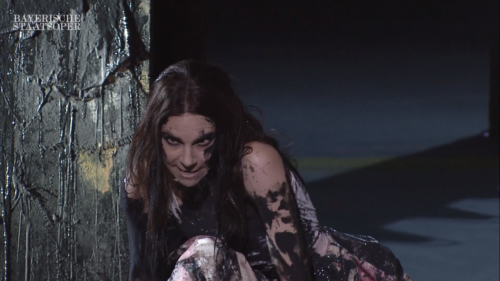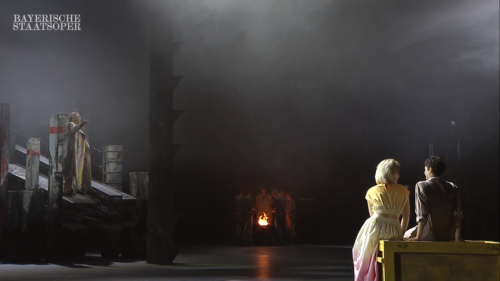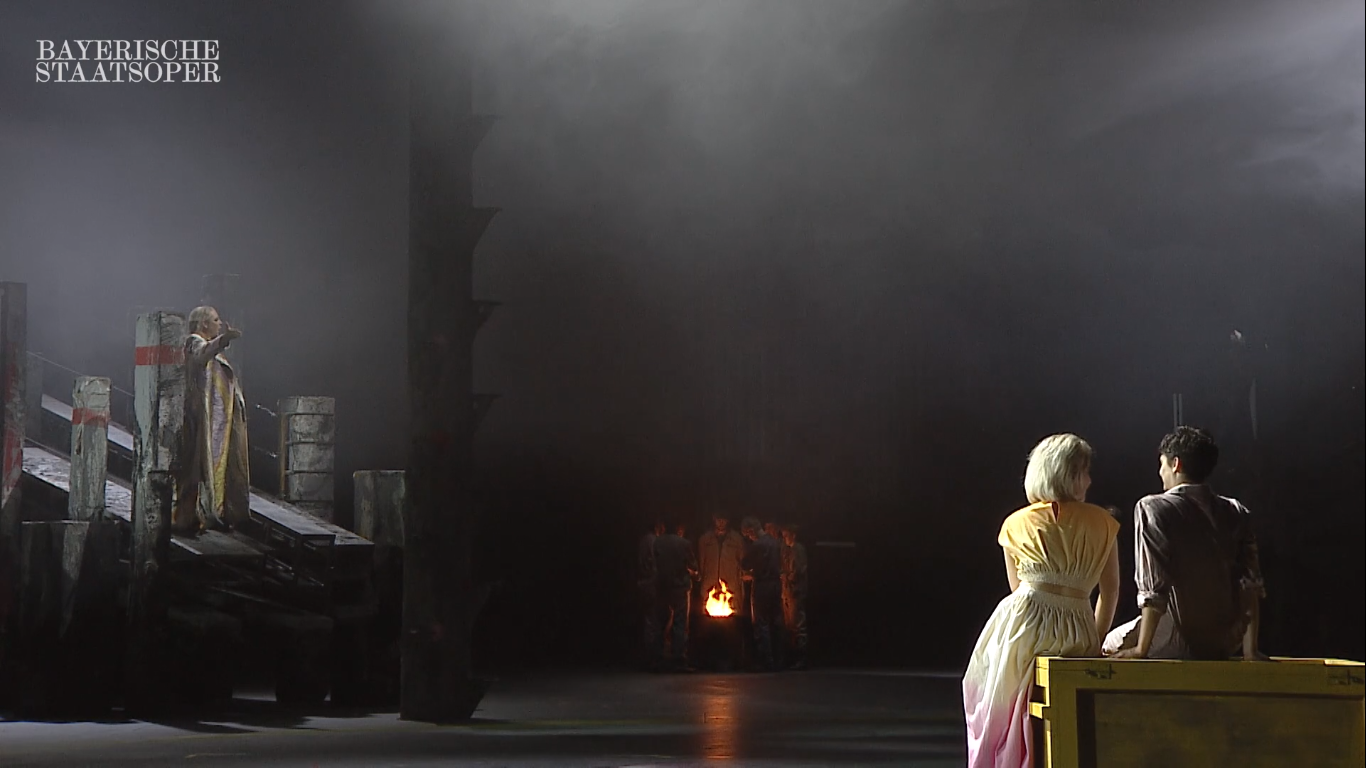 Germany Mozart, Idomeneo: Soloists, Chorus of the Bayerischen Staatsoper, Bayerisches Staatsorchester / Constantinos Carydis (conductor). Filmed (directed by Christoph Engel) on 24.7.2021 at the Prinzregententheater, Munich, and streamed from 26.7.2021 (and available until 26.8.2021). (JPr)
Germany Mozart, Idomeneo: Soloists, Chorus of the Bayerischen Staatsoper, Bayerisches Staatsorchester / Constantinos Carydis (conductor). Filmed (directed by Christoph Engel) on 24.7.2021 at the Prinzregententheater, Munich, and streamed from 26.7.2021 (and available until 26.8.2021). (JPr)

Production:
Production – Antú Romero Nunes
Choreography – Dustin Klein
Set design – Phyllida Barlow
Costume design – Victoria Behr
Lighting – Michael Bauer
Dramaturgy – Rainer Karlitschek
Chorus director – Stellario Fagone
Cast:
Idomeneo – Matthew Polenzani
Idamante – Emily D’Angelo
Ilia – Olga Kulchynska
Elettra – Hanna-Elisabeth Müller
Arbace – Martin Mitterrutzner
High Priest of Neptune – Caspar Singh
The Voice of the Oracle – Callum Thorpe
I understand Mozart’s Idomeneo has only returned ‘home’ rarely in the 240 years since it premiered in the Munich Residenz’s Cuvilliés Theatre on 29 January 1781 (three days after the composer’s 25th birthday). It seems the first performance was overshadowed by the set designs and – fast-forward to 2021 – that happens again because of Phyllida Barlow’s sets for Antú Romero Nunes’s new production. The trouble lies with the opera where not much happens in over three hours of music which has aria followed by aria – often long and repetitious ones – with just a few duets, trios and more ensemble moments. At the end, after a happy resolution to all that had gone before, it peters out with some ballet music, and Nunes uses nine gaudily costumed gesticulating dancers rushing about as Idomeneo relaxes on a crate, swigs something from a can, eats a sandwich and recreates a model of the sets we had earlier seen before the lights go out!
Neptune dominates the opera yet is never seen, nor here in Munich do we see the sea monster he is supposed to create as his messenger later in the action (such as it is). The King of Crete, Idomeneo, is returning home having been away for some time fighting the Trojan War. There is a storm at sea and the king vows that if he is spared he would kill the first living creature he meets; unfortunately, that person is his son Idamante who he has not seen for years. He is walking the shore believing his father was lost at sea and does not initially recognise him. Cue much anguish from Idomeneo about his fate and his reluctance to sacrifice his son. Some prisoners had been sent ahead and one of them was King Priam of Troy’s daughter Ilia who has fallen in love with Idamante, who has acted as regent in his father’s absence. Unfortunately, Princess Elettra, daughter of Agamemnon and Clytemnestra, also loves him and she was forced to flee her home in Argos – after colluding with her brother Oreste in the death of their mother and her lover – and has taken refuge in Crete. Elettra is insanely jealous starting from the moment Idamante spares the other Trojan prisoners as a gesture of goodwill which she considers a betrayal of her homeland.
On his return Idomeneo looks for ways to save his son and much to Idamante’s consternation he will be banished from the island and must take Elettra back to Argos to regain her throne which she sees as an opportunity to win his heart. It is at the harbour before they set sail that the sea monster apparently appears. The end of the opera then is extremely drawn out as Neptune must be appeased; Idamante kills the monster before finally understanding that his father has shunned him due to love not hate, and is willing to be sacrificed. (Nunes shows him wrapping his head in a red shawl and be willing to have it beaten with a metal rod which brings shocking reminders of Isis beheadings.) Ilia then offers to take Idamante’s place before Neptune relents and blesses the marriage of Idamante and Ilia who will rule Crete in place of Idomeneo who must step aside.

So where does Nunes set her Idomeneo? I think we are not far from Aliaga in the Aegean port city of Izmir, the shipyard where decommissioned cruise ships are broken up. Certainly, there is a hint of this going on during the overture. There is much evidence throughout Nunes’s staging that we are at a – frequently smoky and shadowy – quayside with a long moveable slipway (a pier possibly?) seen, as well as two colourful towers and a tall mast-like structure that gets climbed at one point. (At the start and then again later in the opera a disembodied voice intones in German though I could not hear this well in this stream.) There are frequent arrangements of metal girders including an assemblage that helps mount a huge maroon metallic asteroid (well that’s what it looked like) which dominates some of the scenes.
Apart from the king in his shiny coat of many colours, most of the people we see are in overalls in various pastel shades from costume designer Victoria Behr. Notably, there is some aerial work from some acrobats, as well as certain principals, especially Idamante. The aerial artists also have much fun at one point – with their feet on the floor – collecting fireflies in paper bags before releasing them. (To be truthful, the harnesses Idamante, Ilia and others are seen wearing are quite ugly in close-up.) The chorus seemed to have been released to sing maskless on stage rather than being offstage and piped-in from elsewhere as has become the norm lately and excelled in their second act barcarolle ‘Placido e il mar’ (‘Calm is the sea). None of this particularly distracted from Idomeneo but added little either. This was not the case of Nunes imposing a Konzept on the opera, it was just that her ideas did not help banish the work’s longueurs.
Individual musicians play on stage from time to time from the overture onwards, with a string quintet briefly accompanying Idomeneo during the reflective final aria ‘Torna la pace’ (‘Peace comes again’) and this was just a small part of a strong musical performance from conductor Constantinos Carydis and his orchestra. I cannot recall having seen the opera before so lack a point to reference, and accepting this, I found Carydis’s Idomeneo refined, nuanced and affecting without being particularly energised. (An oddity of the filming was that one of the cameras was too low behind the conductor whose hands we could see on occasions.) There are several musical interludes for the accompaniment to come to the fore and at one point I believe we heard a rather tinkly Adagio from Mozart’s D minor Piano Fantasia which I believe has been interpolated into the original score.
Matthew Polenzani complete with long grey hair portrayed Idomeneo’s inner anguish well. Despite looking as if bowed by the cares of the world on his shoulders and frequently with a bemused look on his face, Polenzani gave the king a great deal of noble authority and he intelligently handled the all-important recitative and made light work of Mozart’s more florid passages thanks to his refined technique and vocal eloquence.
Emily D’Angelo was Idamante (a trouser role obviously), and she has been cast for her androgynous appearance as well as her voice. D’Angelo has an agile mezzo-soprano and can navigate any of Mozart’s demands for vocal acrobatics with aplomb remembering this role was originally sung by a castrato. She gave a similar performance as Sesto in Richard Jones’s recent La clemenza di Tito (review click here) at Covent Garden.
Ilia is basically sweet and innocent and has little more depth to her character than that. Olga Kulchynska’s soprano was fresh and agile, and her performance was expressive, tender and quite touching in her love and devotion for Idamante.
When Elettra was seething with fury she was verging on becoming totally unhinged and the scary-eyed Hanna-Elisabeth Müller captured this character wonderfully. Her rage aria ‘D’Oreste, d’Ajace ho in seno i tormenti’ (‘I feel Orestes’s and Ajax’s torments in my heart’) was a tour-de-force as she smeared herself with something black (oil?) and pinged off high notes that brought the composer’s Queen of the Night to mind. (I don’t know where Müller’s voice might take her in the future though watching her, I thought she might be a wonderful Ortrud in Wagner’s Lohengrin someday.) With this one aria she virtually stole the show!
Elsewhere Martin Mitterrutzner was the king’s adviser, Arbace, and his Act II scene with Idomeneo had its moments but his voice was just a touch less flexible than others. His big moment ‘Se il tuo duol’ (‘If your pain’) was somewhat spoilt by some slow-motion – if rather oddly hyperactive – movement all around him. As the High Priest of Neptune, Caspar Singh perhaps might have benefitted from a little more presence in the few brief moments Mozart gives him: he is basically there to implore Idomeneo to ‘Render to Neptune that which is his!’.
Idomeneo allows you to wallow in the beauty of the human voice and that there is no great sense of any real characters on stage is as much the fault of Mozart as it is Nunes’s production which tends to dwarf the singers.
Jim Pritchard
